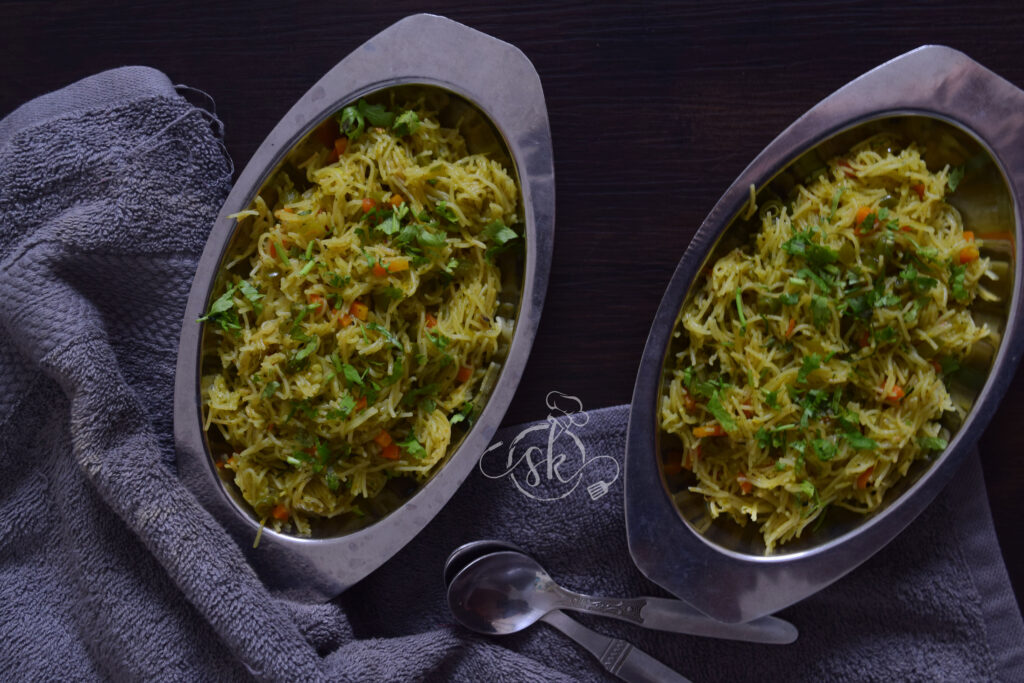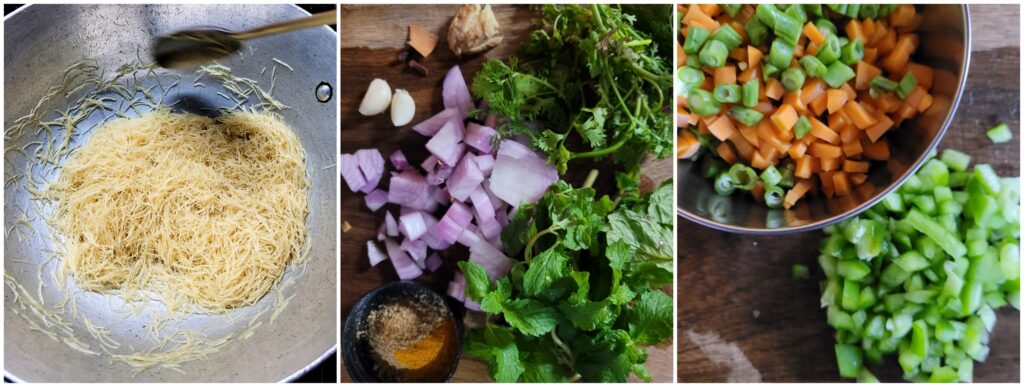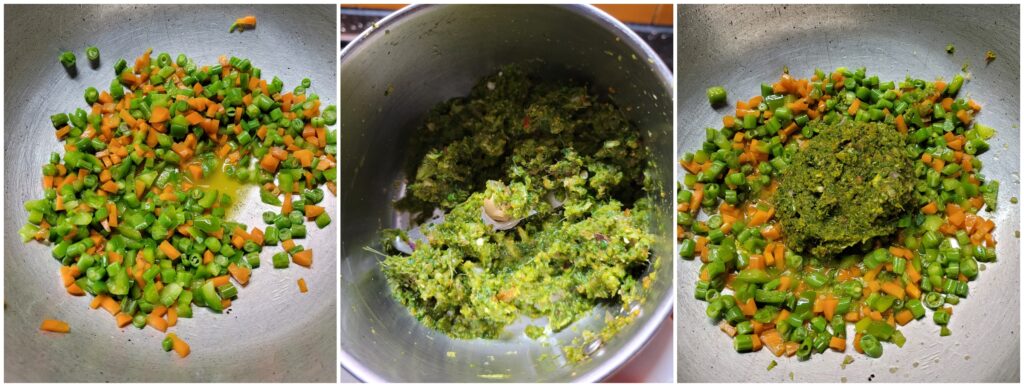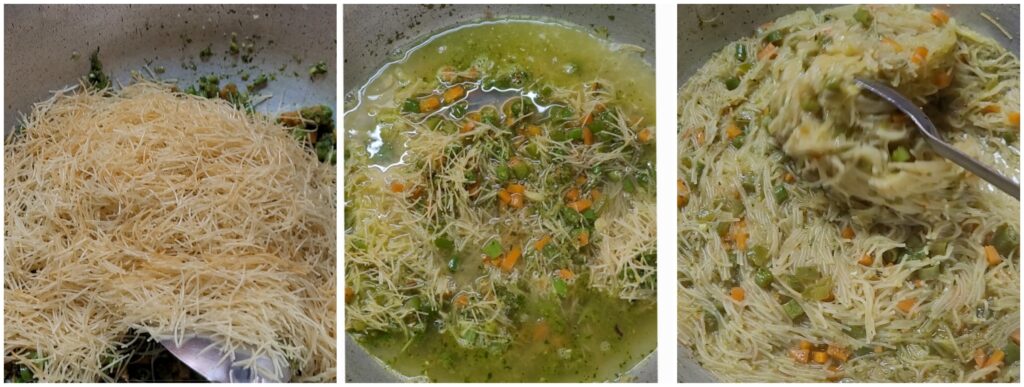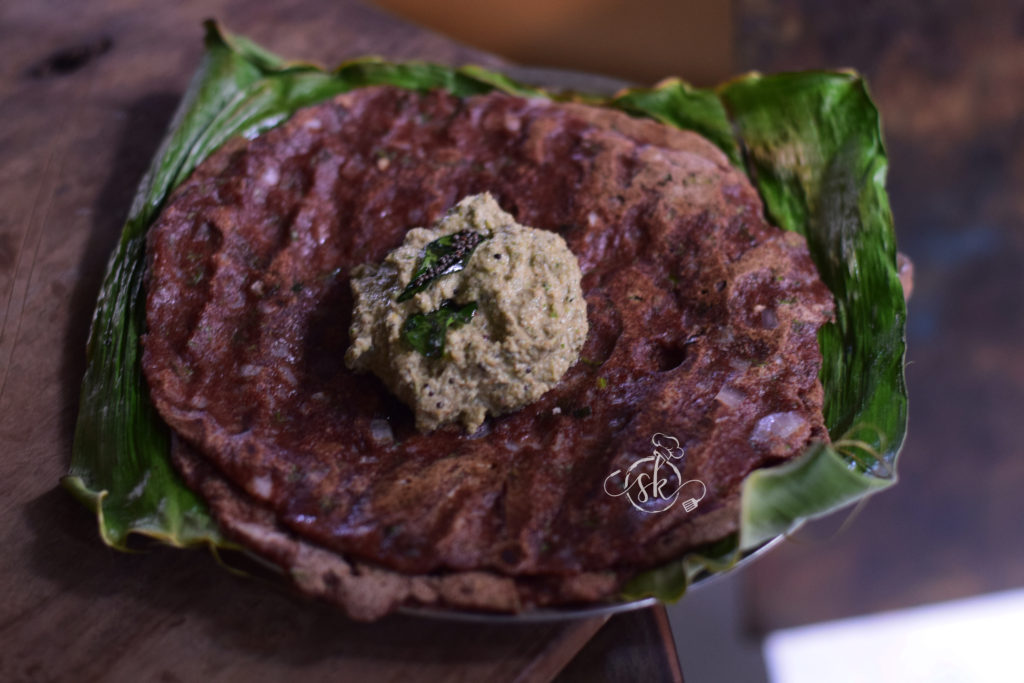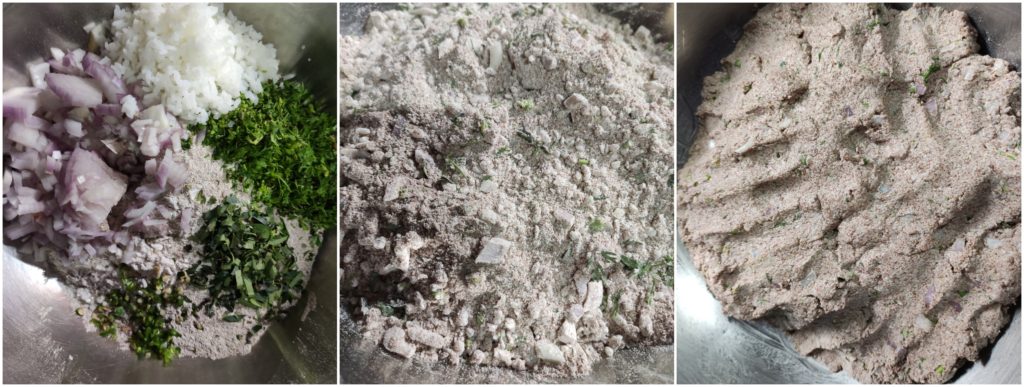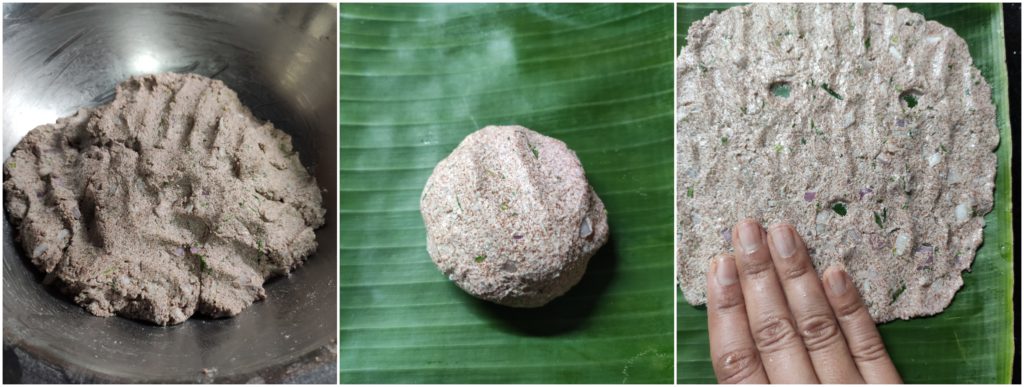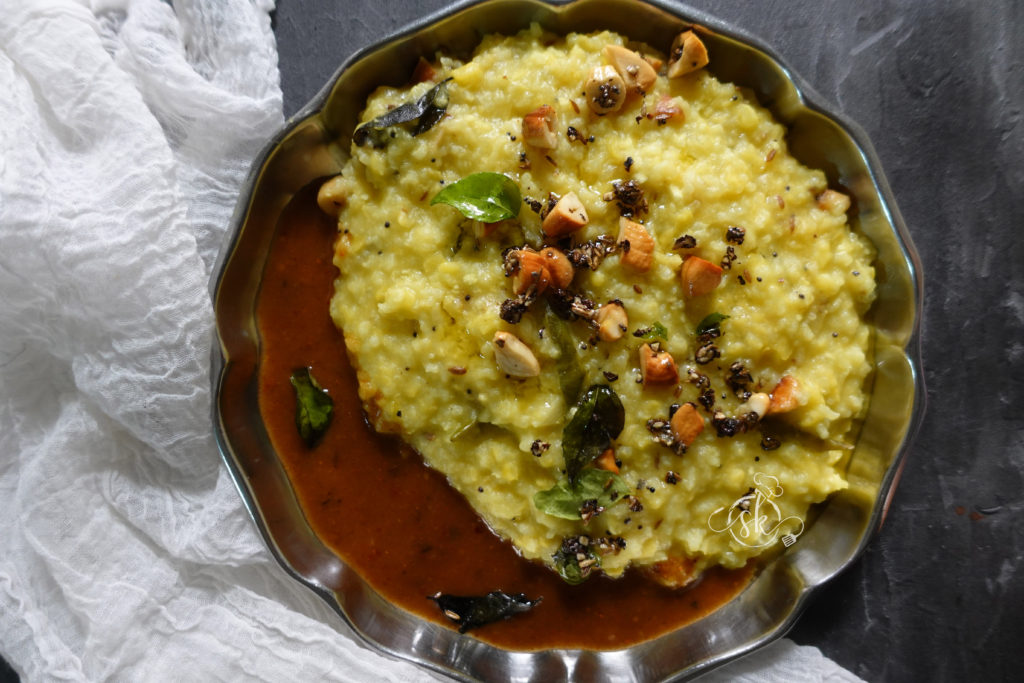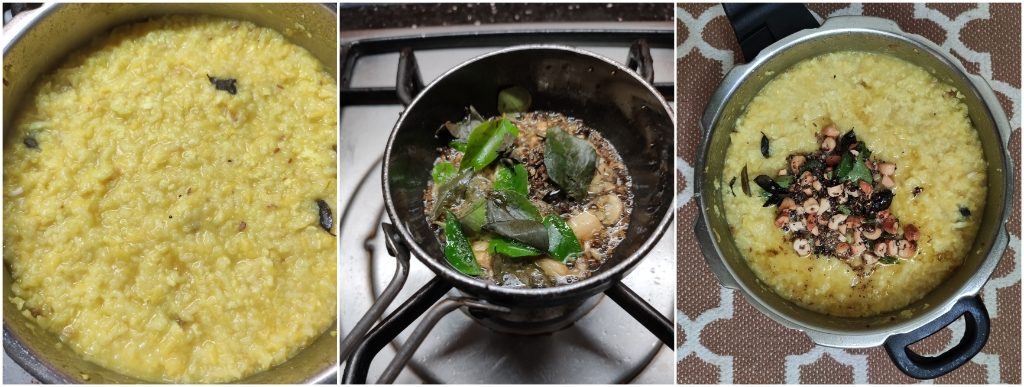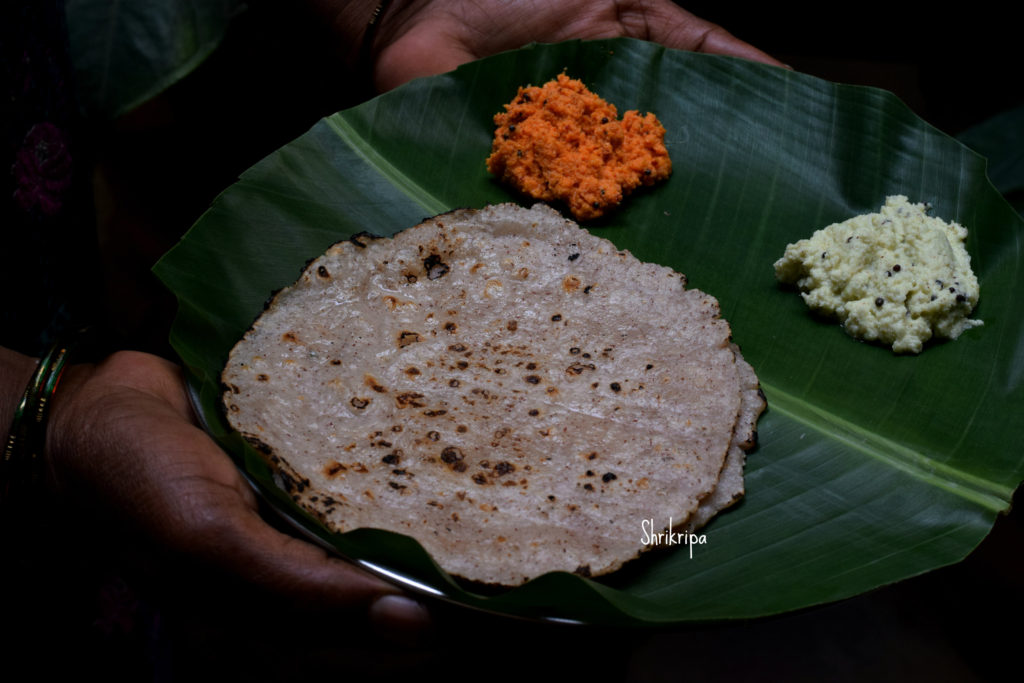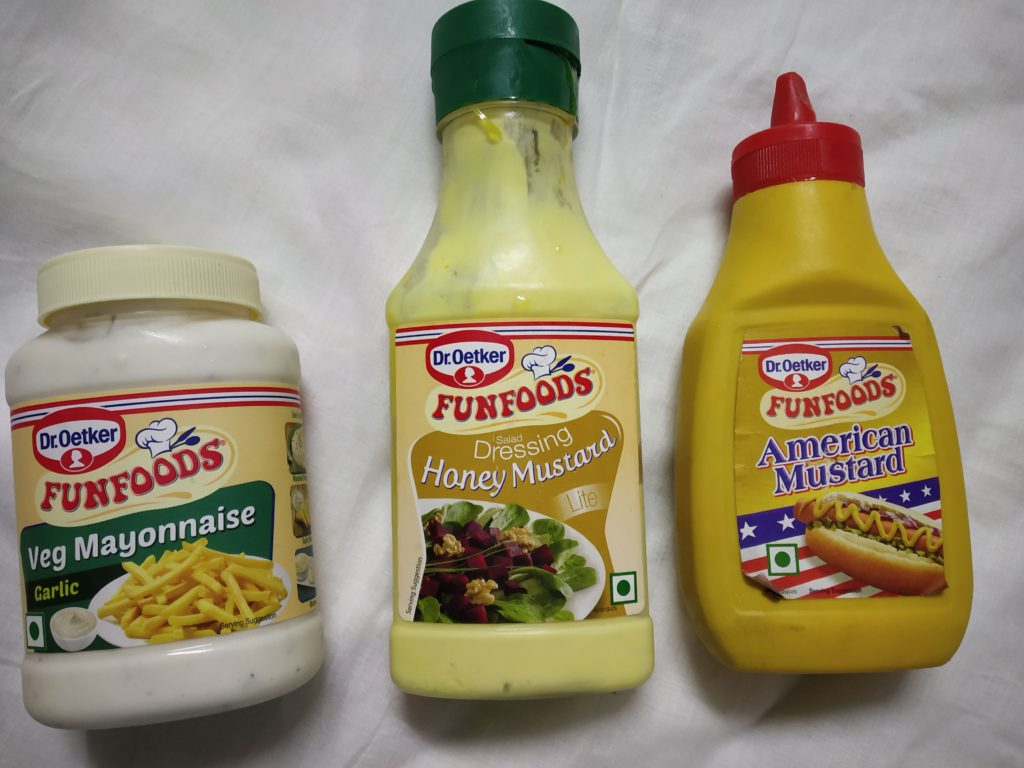Do I need to introduce every one’s favourite dish? It is basically a deep-fried bread with the fermented / proofed flour dough which Is served with semi dried chick pea curry and potato dry Subzi. This is how we eat or were introduced to this loved-by-all dish.

To prepare we need –
For Chole:

Ingredients:
Chana / white chickpea – 1 cup (soaked and swelled)
Black salt – 1 table spoon
Amla powder / Anardana powder – 1 tea spoon
Oil – 1 table spoon
Ghee – 1 table spoon + 1 tea spoon
Onion – 1 (chopped)
Green chilli – 1 (slit)
Ginger – ½ inch (sliced)
Garlic – 4 (crushed)
Tomatoes – 2 (chopped)
Turmeric – 1 ½ tea spoon
Red chilli powder – 1 tea spoon
Coriander powder – 2 tea spoons
Cumin powder – 1 tea spoon
Garam masala – 1 ½ tea spoon
Kasuri methi – 1 table spoon
Salt
Coriander leaves – chopped
Method:
-Cook soaked chana with enough water, black salt and amla powder. It would take any where between 5 to 6 whistles in the pressure cooker.
-Take one tawa, Heat oil and 1 table spoon of ghee. Add onion, green chilli, garlic and ginger fry until it is transparent and light brown.

-Add in all the masalas, from turmeric to Kasuri methi and salt fry for a while. Add tomato, continue frying until tomato wilts. If needed sprinkle some cooked water from the chana and cook tomato well.
-Cool this mixture and grind this into a smooth paste by adding ladle of cooked chana as well. (it would help gravy to thicken)

-Now mix in this paste with cooked chana and start boiling until oil oozes out and garnish with chopped coriander leaves and 1 tea spoon of ghee.
Now we will move towards Bhature / Bhatura :

Ingredients:
Whole wheat – 2 ½ cups
Maida – 1 cup
Chiroti Rava – 1 cup
Curd – ½ cup
Water – ½ cup
Salt
Sugar – 1 tea spoon
Yeast – 1 tea spoon
Oil – 2 tea spoons
Method:
-Take Luke warm water- mix in curd, sugar, salt and yeast. Close the lid and wait until it proofs and bubbles.

-Dry mix all the flours or you can take only Maida as well. Make a dough by using yeast water and apply an oil and keep aside for 2 to 3 hours or until doubles the volume.
-When it is ready or time to serve, roll a small disc and deep fry.
Now one more dish, which is purely an optional item:
Alu Subzi / potato dry:

Ingredient:
Potatoes – 5 to 6
Mustard oil – 2 table spoons
Sun flower oil – 2 table spoons
Cumin – 1 tea spoon
Turmeric – ½ tsp
Coriander powder – 1 to 2 tsp
Red chilli powder – 1 to 2 tsps.
Amchur powder – 1 tsp
Garam masala – 1 tsp
Little Subzi masala – 1 tsp (optional)
Sugar – 1 pinch
Salt
Coriander leaves – chopped (to garnish)
Method:
-Cook potato in pressure cooker for 1 whistle. Peel the skin and dice.
-Take one tawa, heat oil, cumin, diced potatoes, all the powders and fry until masala is coated and becomes little crispy.
Garnish with coriander greens.
For deep fried chillies and Onions :

I normally slit the chillies, put a drop of lemon and salt inside and marinate. While frying bhature, deep fry and serve.
Half the onion, slice width wise and separate the layers by hand and sprinkle some salt and chopped coriander.

While plating, place Bhature, chana , potato, little onions and one chilli and serve with love 😊
